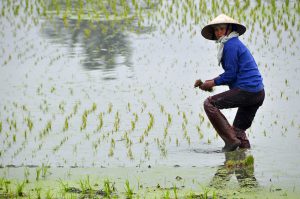Farmers not following the sowing recommendation will not be offered federally determined minimum support prices, as a form of disincentive.

The Telangana government is considering a new recipe to boost farm incomes: dictating farmers, depending on their land and climatic conditions, what to grow, a first in the country.
In a nod to Chinese-style regulations, the move, backed by scientific evidence and experts’ advice, could raise productivity and incomes from farming, analysts said. But it will also see the state on take a bigger role in the farm sector, rather than leaving it to the markets.
Farmers not following the sowing recommendation will not be offered federally determined minimum support prices, as a form of disincentive. They will also not qualify for various input subsidy under the state’s flagship Rythu Bandhu scheme. Input subsidies denote cheap fertilisers and agricultural chemicals, funded by the government.
Chief minister K. Chandrasekhar Rao on Sunday took a meeting with agricultural scientists and agronomists –experts in the science of crop yields– for a final set of recommendations, a statement from his office said.
The state is poised to implement a broad plan that will suggest which crops should be grown, depending on where farmers are located.
According to the plan created by agriculture scientists in the state, paddy has been allotted 8-9 million acres, while cotton is on 5 million acres. Among pulses, tur (a lentil) is sought to be grown 1 million acre and corn on 0.7 million acre. On rest of the arable land, vegetables ought to be grown on 0.35 million acres.
The state will introduce palm oil cultivation interspersed across the state because palm plantation can withstand drought.
“If this policy is followed, then the agriculture produce from the state would get good price. The government should decide on which crop the farmer should cultivate and it is important that the entire cultivation is done based on this policy,” a statement from the state said.
The policy is basically an attempt to break the practise of mono-cropping and introduce crop diversification, said KS Mani of the Tamil Nadu Agricultural University. Crop diversification and more science-based agricultural raises per-acre incomes, he said.
Since rice and wheat fetch higher MSPs, farmers tend to grow much of these and little of others, upending the output balance. This has led to surplus of cereals in the country at the cost of other food articles.
Small farmers who don’t have economies of scale because smaller farms have higher cultivation costs don’t profit from such large-scale wheat-rice systems.
According to the government’s Doubling of Farmers’ Income Report, 2017, the average income of an agricultural household during July 2012 to June 2013 was as low as Rs 6,426 against an average monthly consumption expenditure of Rs 6,223.
In 2019, Haryana started a scheme to disincentivise rice growing in the state to save water in the severely water depleted state, which saw moderate success.
The unique experiment in Haryana could well break a long-standing chokehold on the state’s seriously depleted water table: rampant paddy.
Fifteen thousand farmers in the state, who have traditionally grown only rice, will not be growing the water-intensive crop this summer, the first time in 30 years. They have signed up for a state government drive that rewards them with cash and freebies for ditching paddy for maize.
According to Haryana’s farm department, every hectare (2.4 acre) brought under maize cultivation from rice would save the state 14,000 litres of water needed for irrigation.
“The total area under maize cultivation in districts chosen for the drive now stands at 50,000 hectares,” said Suresh Gehlawat, additional director in the state agriculture department. The move is expected to save 700 million litres of water for the entire season.
In the grain-bowl states of Punjab and Haryana, a practice of paddy-wheat cycle (paddy during summers, wheat during winters) has driven aquifers to an alarmingly low levels.
The campaign worked because of a string of freebies and a state-backed guarantee that all the maize harvested by farmers, who signed up for the programme, would be bought by the state at federally fixed minimum support prices.
source: Hindustantimes
Link: https://www.hindustantimes.com/india-news/in-a-first-telangana-govt-plans-to-tell-farmers-what-to-grow-basis-land-and-climatic-conditions/story-Bu8GyVFK0lLduReuWFIqPJ.html


